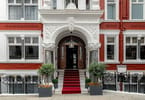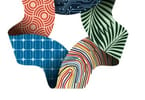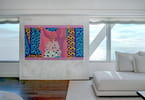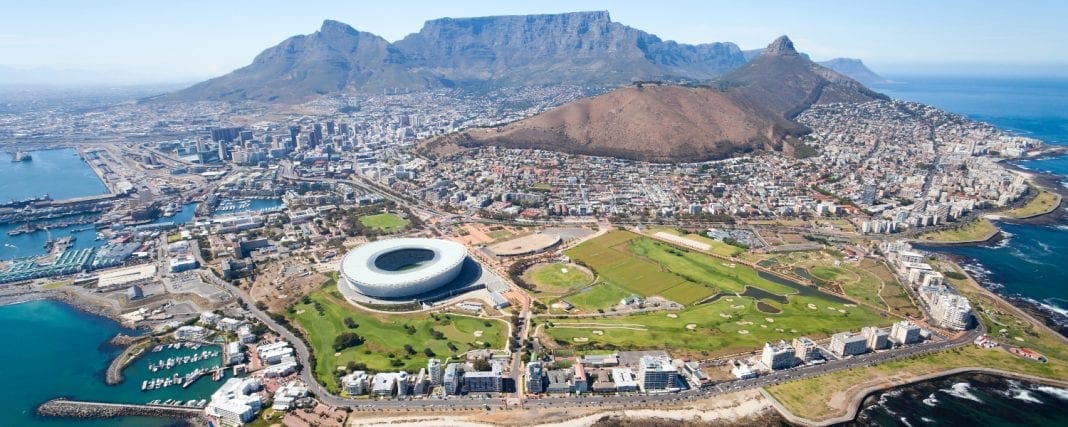If Granada invokes the heady smell of orange blossoms, the lavish Moorish-styled Alhambra or the rhythms of flamenco guitar, you’ve travelled too far. On this side of the Atlantic ocean, the Nicaraguan city of Granada is squeezed between the hulking Mombacho volcano and Lago Cocibolca, 20th largest lake in the world.
Craig Baskett and Eva Logan have just returned from there.
As Nicaragua celebrates its second decade of peace, tourists are discovering Granada as one of the most attractive historic centres in Central America.
“Over the years we’ve spent a fair bit of time in Mexico and Guatemala, and have always enjoyed the culture and food of this region,” says Baskett, who adds they became curious about Nicaragua after hearing and reading about the country’s safety record, charming architecture and great value.
MUST SEES, MUST DOS
According to Logan, when it comes to Nicaraguan culture, new and old, nothing compares to Granada, which is an easy one-hour drive or cab ride from the country’s capital of Managua.
Founded in 1524, Granada is today one of the oldest colonial cities in the Americas. Baskett says despite the frequent assaults from pirates and ambitious imperialists over the years, a good portion of the city’s colonial architecture remains intact. Add the narrow, cobblestone streets and courtyards cafes, and it’s no wonder this Calgary couple enjoyed the city so much.
Like many towns, life in Granada unfolds in the tree-lined Parque Central.
A vast square flanked by colonial mansions and an imposing bright yellow cathedral, here local artisans sell bracelets, rings and other jewelry, as well as other handmade items.
Baskett says keep your eyes open for the Sultan Cigar shop. Like elsewhere in the country, these are made from 100 per cent Cuban tobacco and sell for as little as $1 apiece.
After a day in the sweltering sun, Baskett and Logan retreat to their comfortable, air-conditioned room. Like the other nine rooms in Casa de San Francisco, this one overlooks a traditional colonial garden courtyard. (Casa San Francisco: 207 Calle Corral; 505-552-8235; casasanfrancisco.com; $60 a night for double occupancy and with breakfast.)
By mid-afternoon, other hotel guests, also looking to cool down, join them poolside. Happy hour is well underway offering the second best bargain of the day: four bottles of Tona, the local lager, for $3.
It’s here from this vantage point that Baskett comes to realize his imaginings of a dangerous Nicaragua, land of Contras and Sandinistas were clearly outdated.
“At Cafe Deliet, which is on the spacious front porch of Hotel Alhambra overlooking the parque, you can feast on tender beef and tasty chicken dishes,” says Logan.
“Grilled fish straight from the lake is also on the menu, and all meals come with the delicious fries made from tiny, locally grown potatoes.”
After dinner she says, “It’s a good idea to pop into the Internet cafe in back of the hotel where they sell Eskimo ice cream treats, then head over to watch the teenage boys play soccer on the cobbles in front of the Cathedral.” (Cafe Deliet: Costado Oeste, Hotel Alhambra; 505-552-4486; dinner for two $40 with wine.)
Another way to avoid the heat that begins to build toward noon is to head into the surrounding naturaleza.
A number of eco-excursion companies have sprung up, each one prepared to take you to the upper reaches of the Mombacho volcano cloud forest.
Mombacho hasn’t erupted in centuries, which has allowed the crater to evolve into a huge sunken hole of vegetation. It’s a nature preserve inhabited by howler monkeys, and some say, small jungle cats.
Higher still, you are granted views of Lago Cocibolca (also known as Lake Nicaragua).
Las Isletas — a cluster of 350 volcanic islands — were formed by a Mombacho lava flows eons ago.
Baskett describes them as looking like “pearls scattered over the water’s surface.”
Today the islands are easily accessible by taxi boat or kayak. Most are no larger than a big rock. Some have been snapped up by wealthy Nicaraguans (including the country’s president, Daniel Ortega) and foreigners for vacation homes. But hardworking fisherman and painters (whose works are on display in the local churches and elsewhere in town) make up the largest populations, and one island has a fast-breeding colony of spider monkeys.
Tours, arranged through the hotel, run about $30 per person.
According to this Calgary couple, some of the best aspects of Central America are packed into the area in and around Granada.
There are huge tracts of forests like in Costa Rica, the kind of well-preserved colonial cities you’d find in Guatemala and unsullied beaches as good as those in El Salvador.
According to Baskett and Logan, the local expression: “Granada is Nicaragua; the rest is just mountains,” pretty much sums up their experience.
canada.com
WHAT TO TAKE AWAY FROM THIS ARTICLE:
- After dinner she says, “It’s a good idea to pop into the Internet cafe in back of the hotel where they sell Eskimo ice cream treats, then head over to watch the teenage boys play soccer on the cobbles in front of the Cathedral.
- On this side of the Atlantic ocean, the Nicaraguan city of Granada is squeezed between the hulking Mombacho volcano and Lago Cocibolca, 20th largest lake in the world.
- But hardworking fisherman and painters (whose works are on display in the local churches and elsewhere in town) make up the largest populations, and one island has a fast-breeding colony of….




![China's Hyperloop Train: A Glimpse into the Future of Transportation 2 Travel Tourism News | Domestic & International Hyperloop Train China [Photo: Hyperloop Transportation Technologies]](/cdn-cgi/image/width=145,height=100,fit=crop,quality=80,format=auto,onerror=redirect,metadata=none/wp-content/uploads/2024/02/180720163348-hyperlooptt-china-capsule.jpg)

















